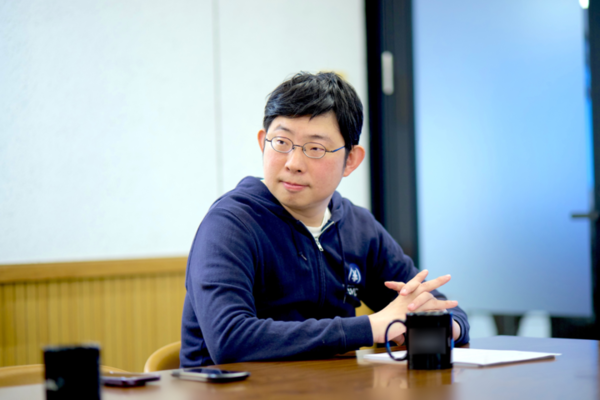
※Editor's note - The market's interest in token securities and other digital assets is hot. However, the reality is that they have not been able to overcome the legislative threshold. There are even concerns that the golden time in the global digital finance competition will be missed. On the other hand, Japan, which was once called the "coin mint", is quickly embracing the digital asset era. Through 5 speakers at the Blockchain Week in Busan (BWB) 2024 on the 28th and 29th, we will look into the current status of digital assets in Japan.
"I dream of active exchanges between Korea and Japan through stablecoins, such as being able to use won-pegged stablecoins like JPYC at stores in Japan, or being able to make payments with JPYC at stores in Korea."
Noritaka Okabe, CEO of JPYC, the issuer of the Japanese yen-linked stablecoin, expressed this view on future trade transactions between the two countries using stablecoins. JPYC is the world's first startup invested in by Circle, the issuer of the second largest stablecoin USDC, and holds a 99% market share in the Japanese yen stablecoin market. JPYC started issuing the prepaid stablecoin 'JPYC' in January 2021, and the cumulative issuance amount exceeded 2.9 billion yen (about 265 billion won) as of last August.
Stablecoins are electronic payment methods designed to have little price fluctuation, using legal tender or international commodities as collateral assets. Unlike Bitcoin, they use blockchain technology but have relatively stable prices, making them suitable for payments and remittances. Representative stablecoins like USDC and USDT, which are pegged 1:1 to the US dollar, are also used for international remittances.
The background for JPYC to pursue the stablecoin business is that related laws were established early in Japan. In June 2022, Japan became the first country in the world to pass a revised "Payment Services Act" to regulate stablecoins. From December 2022, the Financial Services Agency (FSA) of Japan has been proceeding with the revision of the Cabinet Office Ordinance to allow the handling of foreign-issued stablecoins, subject to sufficient asset preservation, and the relevant law has been in effect since June 1 last year.
CEO Okabe said, "The Japanese government was one of the first in the world to create regulations specialized for stablecoins in 2022," and "The reason why Japan was able to quickly create a balanced regulation that recognizes issuance by startups while thoroughly protecting users is that JPYC actually circulated the yen stablecoin while complying with the legal regulations, which supported the discussions in the Diet."
On the other hand, in Korea, stablecoins are viewed as targets of regulation. Bank of Korea Governor Lee Chang-yong said that stablecoins can affect Korea's financial and foreign exchange markets and monetary policy, and that central bank digital currency (CBDC) is more transparent than stablecoins.
Of course, central banks around the world, including Japan, are considering issuing CBDCs, but it is estimated that it will take 3-4 years for actual issuance. Particularly in Japan, it is analyzed that the B2B payment market using stablecoins within Japan will reach 1,000 trillion yen (about 9,160 trillion won) per year. This is why the legalization of private stablecoin issuance has been able to gain speed.
However, CEO Okabe expressed regret that while Japan has quickly responded to the global digital finance competition by being the first in the world to incorporate stablecoins into the system, it has lost the initiative to the European Union (EU). He said, "Although the revised law came into effect in June last year, no company has obtained a license due to issues on the private side, such as the leakage incident at a virtual asset exchange, and during that time, the EU, which has set regulations for stablecoins, has granted USDC and EUROC issuance licenses to Circle."
In fact, the European Parliament passed the world's first virtual asset regulatory package, "MiCA", last year, and instructed to prepare sufficient reserves to prepare for large-scale withdrawals of stablecoins, limiting the daily trading volume of stablecoins to 2 billion euros (about 298.5 billion won). In the United States, Treasury Secretary Janet Yellen is calling for prompt legislation on stablecoin regulation, accelerating the movement to separate stablecoins from the virtual asset market.
Nevertheless, CEO Okabe emphasized that Korea is an important partner for the digital asset industry. To this end, JPYC recently signed a memorandum of understanding (MOU) with Korean IT service company ITSen for joint research on stablecoins.
He said, "From the perspective of Japan, Korea gives the impression that there are many virtual asset projects, and the atmosphere for the digital asset industry is heating up," and "In this respect, I am pleased to be able to jointly research the won-pegged stablecoin and others with ITSen, a Korean company."
He added, "I hope that this joint research with ITSen will lead to the use of the Korean won stablecoin like JPYC at stores in Japan, or the use of JPYC for payments at stores in Korea, further developing exchanges and trade between the two countries."
Meanwhile, through this agreement, JPYC plans to integrate its expertise in responding to Japanese regulations and blockchain technology with ITSen's real-world asset (RWA) business, and to promote the development of local stablecoin business and the construction of a new financial ecosystem.





